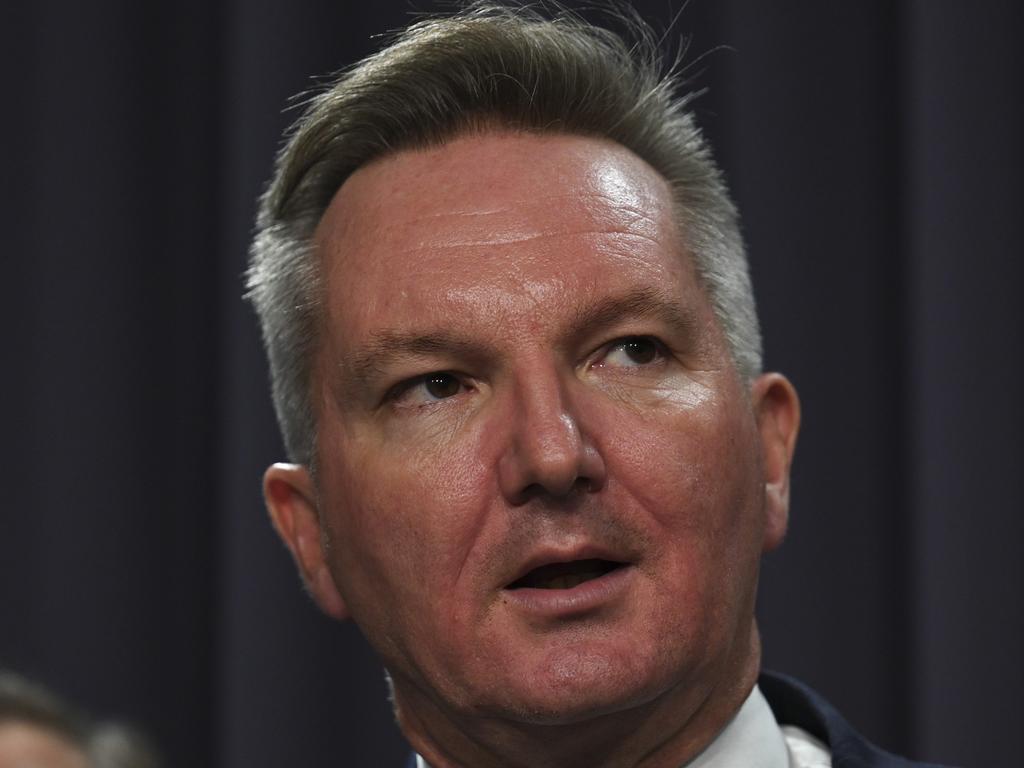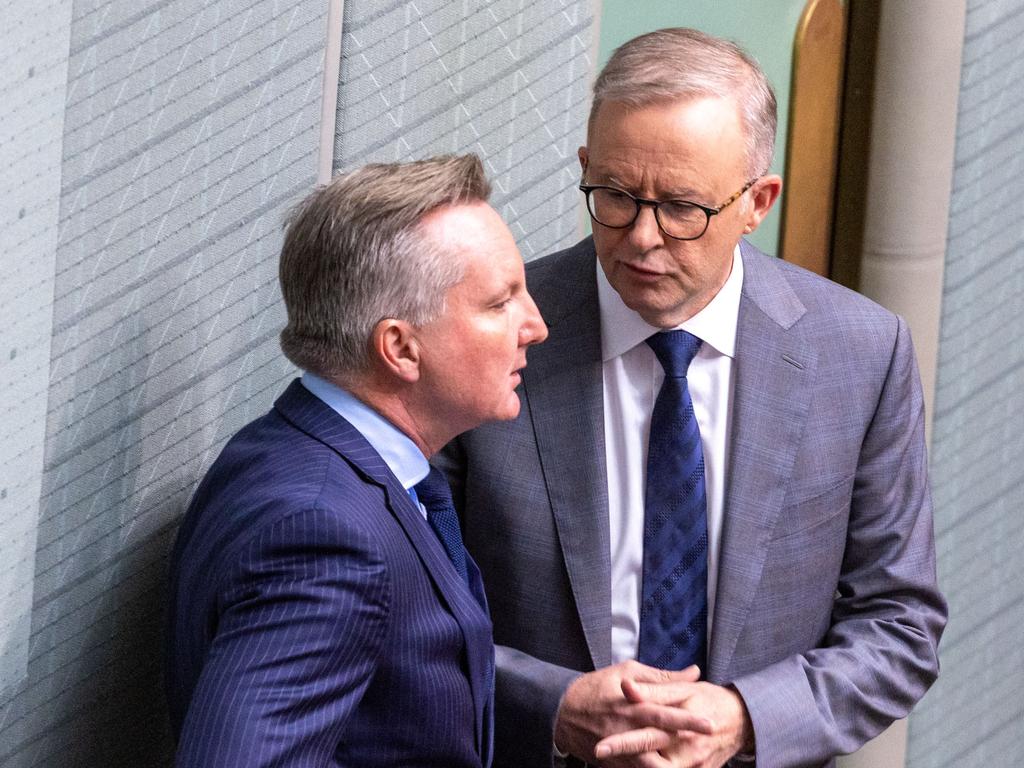Chris Bowen mugged by the power of reality when it comes to electricity


Without it everything that sustains modernity would stop and the distance between life as we know it and a return to one that is nasty, brutish and short would be measured in days.
And energy is much more than electricity. Coal, oil and gas are in everything you see in the built environment, embedded in the industrial production of what Canadian polymath Vaclav Smil calls the four pillars of the modern world: steel, plastic, cement and ammonia.
The transformation of the world in the 20th century, from motorised flight to the moonshot, is the most astounding technological leap in human history. The lifeblood of the revolution was oil, when it rose to displace coal as the major source of primary energy.
The ingenious manipulation of energy-dense oil, gas and coal has delivered a miraculous array of benefits so ubiquitous that most never think about them. And we have yet to invent the industrial processes that can manufacture Smil’s four pillars, at scale, without fossil fuel. (Unless, of course, you find a rent-seeking billionaire to insert the words “green hydrogen” into every answer and the problem is Greenwished™ away.)
This all adds up to a lot of fossil fuel buried in the world’s energy consumption. In 2023 fossil fuel accounted for 82 per cent of the world’s primary energy, down from 87 per cent in 2010. As chemical engineer Robert Rapier notes: “At that rate of decline, it would be nearly 200 years before fossil fuel consumption reached zero.”
Here, both major parties say they are committed to hitting a net-zero carbon emissions target by 2050. So the debate over whether we are doing it is over. The only question is how we do it.
To date, almost all the focus is on transitioning electricity generation, or fixing about 25 per cent of the overall net-zero puzzle. That alone will be tough, but surely the transformation has to be built on the principle that the primary purpose of the electricity grid is to provide constant, reliable, affordable power. If it doesn’t then you can have all the Made in Australia plans you like but nothing will actually get made.
Cutting greenhouse gases is a secondary goal. So the transition should proceed with the mix of energy sources that maps the swiftest, safest pathway to enduring change. The pace should not be forced to fit artificial deadlines set in a political virtue auction.
If you genuinely believe, as the Albanese government does, that there is a climate emergency then no technology that offers even the remote possibility of refuge should be ignored. When the ship is sinking, all lifeboats go out. So nuclear and carbon capture and storage have to be in the conversation, as both are included in the net-zero models of the International Energy Agency.

But that’s not what we are doing and the coding error is etched in the federal minister’s title. Chris Bowen is the Minister for Climate Change before he is the Minister for Energy. So, with the cart before the horse, weather-dependent generation has become the Greenwishing™ answer to every question about transitioning the grid.
Bowen is clearly proud of his capacity to deliver pithy gems like “the wind and sun don’t send a bill”. Alas, this piece of lyric genius glosses over the inconvenient truth that the people who build wind and solar farms do send bills and also quite like taxpayer subsidies.
And given their fluky generation source is available only 40 per cent (wind) or 25 per cent (solar) of the time, something has to fill the massive void they create. That something (gas, yet-to-be-built pumped hydro, undreamed of amounts of battery storage) can send a very, very big bill.
Then there are the technical challenges created by bolting on-again/off-again power into an always-on grid. Add the troublesome fact that replacing highly energy-dense sources of continuous power with ones that are sparse and intermittent means generation has to be massively overbuilt. The staggering hope is that we can build 50 times the generation of the Snowy Hydroelectric Scheme in the next 26 years.
Let’s be clear, Australia should aim to maximise the amount of wind and solar the grid can accommodate, within the laws of physics while protecting the local ecology. But the more weather-dependent generation rises on the grid, the harder the task of managing it becomes and the higher the costs. That cost will go on your electricity bill or come out of your taxes.
So one sure bet on our energy future is power prices will rise, and it’s time the minister acknowledged that. We will pay for the entire system rebuild, not just the cost of power when the wind is blowing and the sun is shining.
But there is some good news. Bowen has had a Damascene conversion to making the case for gas.

In a speech to the Energy Users Association this week he noted the ability of gas to match the peaks and troughs of wind and solar. While once again talking up the green hydrogen future, he acknowledged the unforgiving present: “There are not yet substitutes for gas in many industrial settings.” Finally, he went so far as to say with current supplies of gas dwindling, “new supply will be needed – even as we electrify at pace”.
This, for Bowen, is a step change. Until now the only person in government with the sense and the guts to make the case for gas has been Resources Minister Madeleine King. She must be thrilled to have Bowen’s belated support.
Bowen has been mugged by reality. He now realises he has to stop giving false comfort to those who think electricity grids will obey ideology. And soon he will have to confront another reality. The life of existing coal-fired plants must be extended until equivalent firm generation has been built.
The NSW government is in talks with Origin Energy to extend the life of Eraring power station beyond 2025. Does Bowen also support this?
One wants to give Bowen some credit, and would have if he had done less green grandstanding and taken less than 700 days into his ministry to recognise the bleeding obvious.
It’s impossible to predict the future, but there’s one certainty: this transition won’t go to plan. And the stakes on the table are nothing less than the wealth and security of the nation.
Bowen’s colleagues should take note of that risk and contemplate whether any party ever won an election by promising people a poorer, colder, darker, future.







Energy is not part of the economy. It is the economy.